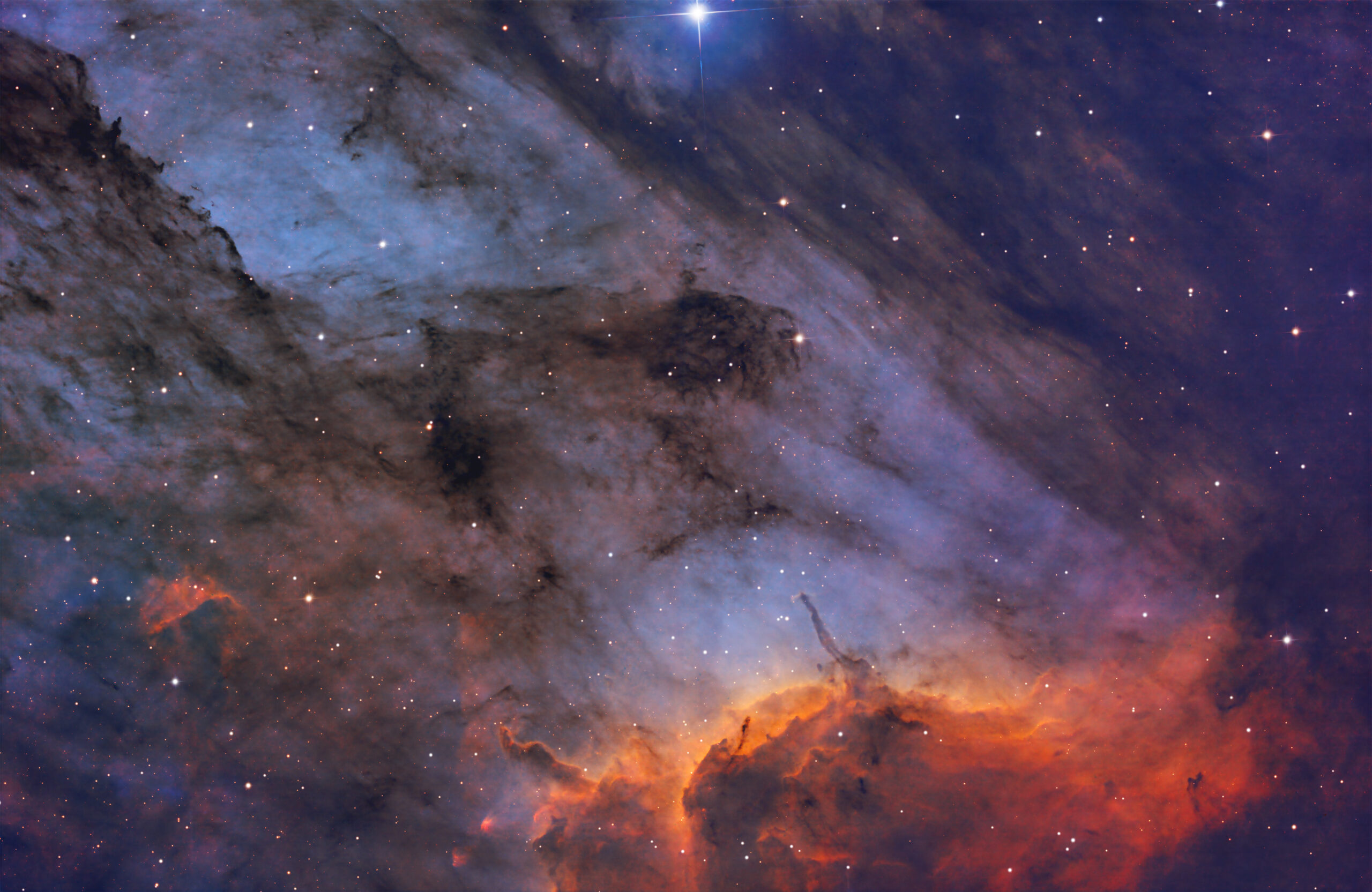

IC5070 Pelican Nebula Fragment
| Description |
The Pelican Nebula (also known as IC 5070) is an H II region associated with the North America Nebula in the constellation of Cygnus. The gaseous contortions of this emission nebula bear a resemblance to a pelican, giving rise to its name. The Pelican Nebula is located near the first-magnitude star Deneb and is separated from its more prominent neighbor, the North America Nebula, by a foreground molecular cloud filled with dark dust. Both are part of the larger H II region of Westerhout 40. The Pelican is a much-studied object because it exhibits a particularly active mix of star formation and evolving gas clouds. The light from young, energetic stars is slowly transforming cold gas to hot and causing an ionization front to gradually advance outward. Particularly dense filaments of cold gas are seen to remain, and among these are found two jets emitted from the Herbig–Haro object 555. Millions of years from now, this nebula might no longer be known as the Pelican, as the balance and placement of stars and gases will leave something that appears completely different. |
|---|---|
| Data/Processing Attribution |
This is my data and processing. |
| Distances/Size |
Distance to the object: 1,800 light-years. |
| Equipment |
Mount-PlaneWave L-350; Scope-PlaneWave CDK14″, 356 mm aperture, 2563 mm focal length; Camera-Moravian C3-61000, 0.30 arcsec/pixel. |
| Observatory |
The image was captured at the Prairie Skies Astro remote observatory. |
| Exposure |
The total exposure using SHO and RGB (for stars) filters is 12 hours, 14 minutes, and 55 seconds, with each sub-exposure lasting 90 seconds.
SHO and RGB Filters for stars Ha- 43X300sec = 3 hours 35 minutes S2- 30X300sec = 2 hours 30 minutes O3- 42X300sec = 3 hours 30 minutes R- 36X90sec = 54 minutes G-36X90sec = 54 minutes B-35X89sec = 51 minutes 55 sec Processing is done in PixInsight, Photoshop, and Lightroom Classic |
